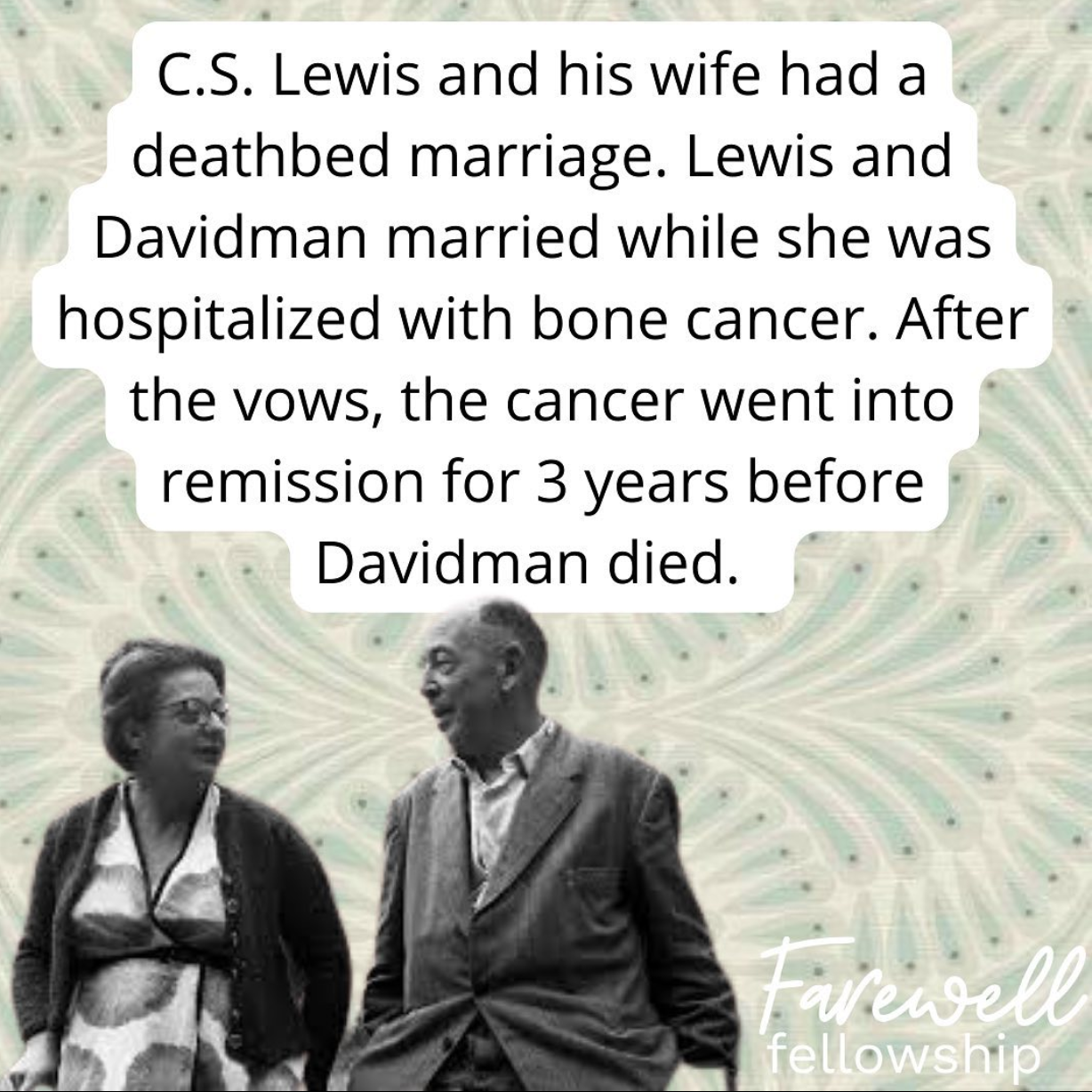C.S. Lewis
C.S. Lewis, prominent writer and theologian best known for his work “The Chronicles of Narnia” was long considered a bachelor by the time he met and wed Joy Davidman. Davidman, also a writer and poet, was an Jewish-American atheist and communist but began communicating with Lewis as she had a conversion into Christianity. What began as a penpal relationship became an intimate intellectual connection and this led to Lewis entering into a civil union with Davidman to allow her to continue living in the U.K. when her work visa was inexplicably revoked in 1956.
Shortly after their marriage, Davidman’s hip pain was diagnosed as terminal bone cancer, prompting the friends to acknowledge the breadth and depth of the feelings between them. From her hospital bed in 1957, their civil union was blessed by a friend and priest, making it a romantic partnership as well.
Davidman’s cancer unexpectedly went into remission and the three years following the wedding found Lewis and Davidman (and her two sons) living as a family in the estate that Lewis occupied with his brother. Davidman died in 1960 after her cancer recurred and her death was faithfully attended by her husband. “A Grief Observed” was an intimate and devastating portrayal of Lewis’ bereavement, so personal that it was originally published under a pen name.
Lewis did not long survive his wife though, his increasing health complications mounted over the next three years. One hour before John F. Kennedy’s assassination, Lewis died of a heart attack at age 64.
Though brief, the later-in-life love between Lewis and Hartman has captivated the imaginations of the fans of both, spawning plays, books and even a movie.
Of his wife, Lewis penned these words:
“She was my daughter and my mother, my pupil and my teacher, my subject and my sovereign; and always, holding all these in solution, my trusty comrade, friend, shipmate, fellow-soldier. My mistress; but at the same time all that any man friend (and I have good ones) has ever been to me. Perhaps more.”

